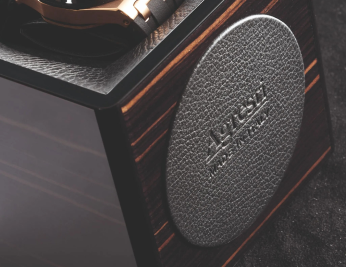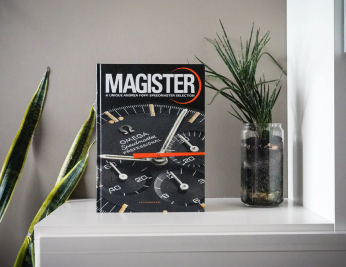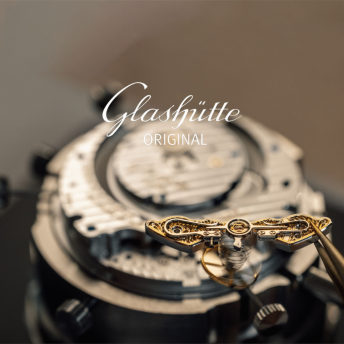What do you think the concepts of uniqueness and rarity represent?
What does it mean to be exclusive?
And again… does the particularity that makes an object unique represent the necessary condition for it to become recognizable, recognized and desired?
And what role would aesthetic beauty play in this match? Could it coincide in your opinion with the model expressed above?
These are difficult questions dear friends of IWS. However, with the spirit and the usual manner that characterize us and, above all, without taking away space to much more important issues that are gripping us in this period, such as the AC Milan transfer campaign that is struggling to take off, we will try to answer to all the questions listed above by going over the details and peculiarities that make some watches more collectible than others, electing them as an object of desire for collectors from all over the world.
De gustibus
I have always wondered what were the basic characteristics that could make a timepiece unique and desired, but even today, after so many years of passion and collecting behind it, I cannot give myself a clear and precise answer. In my humble opinion, the only concepts that somehow manage to build a strong thesis must essentially orbit around two fundamental aspects: details and personal taste.
As we will see later, the first is easy to describe, the details are important and I’m certainly not the one to discover it: Tropical, Spider, Patrizzi dials, Ghost inserts and other types of color changes are just some of the details that make the object more sought after. If we add to this limited editions or series developed specifically for particular events or anniversaries, you understand well that the collectability index is soaring…


The rule is therefore made quickly: the greater the details, the greater the chances that the object will become attractive and sought after by the market. Regarding personal taste, on the other hand, I raise my hands. Here, a world as wide as it is sacred called subjectivity opens up in front of us, within which there are no rules, let alone canons. Password “I like it” … come to think of it, it is the rule that drives the choices of our life, from the restaurant on Saturday evening to the reasons why we fall in love with a particular person or not.
But let’s get back to us dear friends of IWS, and let’s dedicate ourselves to what we do best, telling you about watches. Today’s journey is rich and exciting and will lead you to discover some of the peculiarities most sought after by collectors on the international watchmaking scene.
You are ready? Let’s go …
The importance of being vintage
Before moving on to the presentation of the particularities most sought after by collectors from all over the world, it is necessary to identify and give the right space to the context in which we find ourselves. It is a bit like a good wine, to appreciate it and associate it with the right course at the table you need to know the type of grape used, the years of aging, its bouquet, and even to which cellar it belongs.
Let’s try to overturn this concept to the world of watchmaking, you understand that the more details available, the greater the chances that the object will be appreciated and sought after. The slice of watchmaking that par excellence stands out for its wealth of details and extraordinary details sought after by the public is undoubtedly the one that belongs to the vintage world.

A vintage watch is not just a timepiece, it is much more. A precious object able to tell, through the toning of its dial and the opacity of its indexes, the experiences lived during his life. It is a fact now that the demand for vintage watches in the last decade has grown exponentially, occupying a permanent and ever-growing part of the international market.
But in concrete what are the characteristics that are most appealing to collectors from all over the world? Those for which you fight with bids at auction houses, for which you travel kilometers and kilometers to view the object from the dealers, and for which you cannot take your eyes off the dial without even noticing the ‘Now? To find out together, we introduce 4 evaluation parameters: rarity, aesthetics, ease of counterfeiting evaluated according to the criterion “higher score less possibility of counterfeiting” and wallet, the latter instead evaluated according to the criterion “higher score higher convenience”. For each of these parameters we will assign from 1 to 3 points. The greater the total, the greater its “collectability”.
Tropical dial
“Rarità 1 – Estetica 3 – Facilità di contraffazione 3 – Portafoglio 1 – Totale 8”
The expression “tropical dial” refers to all the dials that have undergone a color change due to a long and continuous exposure to the sun, and hence the term tropical precisely for the tan that distinguishes them … .it is thanks to the particular materials and paints with which the dials of the time were made that the results of these tonings are nothing short of extraordinary.
The black and dark dials in general can take on splendid shades ranging from chocolat to deep purple, while the colder colors, of the light dials, light up by turning to more intense and decidedly more interesting shades of champagne and cream. Wonderful example is the cream dial from the Daytona ref. 116520.

Although the intrinsic value of the objects characterized by dials of this type is still strongly linked to the main characteristics such as maison, reference and year of production, the timepieces characterized by tropical dial can increase on average by 30/50% and in some cases even to more than 100% the market value of the object.
Not bad right? To better understand this concept, let’s analyze a rather striking example, the famous Omega Speedmaster CK2915-1 beaten last November for about 3.4 million dollars and characterized by a beautiful tropical dial toned in chocolate. With the same technical characteristics, reference etc … its non-tropical twin was beaten for only, so to speak, 400,000 dollars, about eight and a half times less …

Returning to the tropical dials in general, from the point of view of rarity and ease of counterfeiting, it is necessary to make a brief reflection. For a certain long period of time, the fashion houses around the world used specific dyes to paint the dials which had the defect of losing color over time.
For these reasons I do not feel I can indicate this particularity as extremely rare. Same consideration but different point of view for the ease of counterfeiting. The fact that the specific color change is in itself caused by a particular paint used in the past means that the difficulty of counterfeiting is really high and in any case not convenient. Let me explain better, making a current dial topical is almost impossible, or in any case really difficult precisely because the materials used are profoundly different, so be very careful, if they try to match a modern timepiece with this type of toning it will in all likelihood be a nice fool …
If you want to learn more about the tropical dials, I refer you to the full article by clicking here.
Spider dial
“Rarità 2 – Estetica 1 – Facilità di contraffazione 3 – Portafoglio 3 – Totale 9”
The expression “spider dial” refers perhaps to the only alteration of the dial that does not concern a color change but a real cracking of its surface.

In fact, in the early 1980s, various fashion houses alternated the use of some coloring and polishing products for their finishes. The incompatibility of these items together with exposure to the sun and sudden changes in temperature has resulted in the dials peeling over the years, creating that spider web effect typical of these timepieces.
But how is this detail considered by insiders and collectors? If the tropical dials are very popular by literally exploding market prices for their spider cousins, there is undoubtedly less interest, probably due to the fact that in the collective imagination they are almost considered as “ruined, or defective” watches. Even the main online sources do not deal with the subject much, confining them mostly to a very niche segment of the sector, for the series “the spider dial either you like it or you hate it …”

Like it or not, they represent an important page in watchmaking. It is thanks to them, in fact, to avoid falling back into this type of defects, that the manufacturing techniques, in terms of materials and products used, have made great strides.
Another positive interpretation lies in their authenticity. It is an extremely difficult effect to reproduce, so the spider feature is a great way to attest to the consistency of the timepiece, or at least of its dial …
Patrizzi dial
“Rarità 3 – Estetica 3 – Facilità di contraffazione 2 – Portafoglio 1 – Totale 9”
Considered as one of the world’s leading watchmaking experts, Osvaldo Patrizzi was the first to highlight as an extraordinary peculiarity and possible “commercial plus” this splendid hazelnut color change concerning the edges of the Daytona chrono counters compared to the W, S, T series and sometimes even U.

In practice we can and must consider this particularity as a subset of the tropical effect discussed above. In fact, in order to protect the dial, Rolex used a transparent lacquer called “zapon”, which, by not fully covering the chronograph totalizers, allowed the silver edges to oxidize, giving the dial the unique cachet that we all recognize and love.
This “peculiarity” has certainly changed the way of collecting Rolex at the same time making the maison even more unique and noble. Suffice it to say that the reference 16520 Patrizzi has a request twice as high as the same reference without toning. For these reasons, considering that this particularity falls exclusively in production between ’94 and ’95, it does not take a marketing expert to imagine how much the price of these splendid objects has reached levels light years away from goodwill and logical understanding. of anyone not affected by the collecting disease.

A serious problem, linked both to the appeal of these objects and to their rarity, is given by the ease of counterfeiting that has been taking a turn in recent years. To have all the weapons on how to distinguish an original Patrizzi from a fake one, I refer you to our complete article by clicking here.
Ghost font
“Rarità 2 – Estetica 3 – Facilità di contraffazione 1 – Portafoglio 3 – Totale 9”
Again thanks to the exasperation that accompanies the collector in finding names and nicknames for all the particularities that distinguish the timepieces, we discover together one of the color changes I most appreciate, the ghost bezel or phantom ring. Also due to sun exposure assisted by climatic conditions in general, this splendid peculiarity develops through the loss of color of the aluminum ring, giving the object, perhaps in a more decisive way than all the other types of color changes seen before , a very special vintage effect.
The ring clearly plays a fundamental role in the effect obtained. The more important its role in the object, the greater the appreciation that this type of particularity can arouse. That’s why the most sought-after timepieces with a ghost bezel are all Rolex Submariners, Rolex GMT Master and Master II ceramic before and Tudor ref. 79090, ref. 79190 and ref. 76100.


Attention guys because the ease of counterfeiting is really high. In fact, through special solvents it is not difficult to recreate these effects. So keep your eyes open and if you need advice, do not hesitate to write to us.
Conclusioni
We are dear friends of IWS, even today we have reached the end of our journey. We strongly hope that this article has not only been useful to better explain one of the most popular phenomena in the world watchmaking scene, but has also opened a more aware and mature perspective of vision. In summary, my very personal advice is not to let yourself be carried away by the current of the moment: throw yourself into the vintage market exclusively driven by the fashion of owning a tropical dial, a spider or why not a beautiful Daytona Patrizzi could lead you to make risky choices that can potentially turn out to be sensational swindles …
Always remember, therefore, and here I close, that looking out into the vintage world is as beautiful as it is dangerous, but do not fossilize exclusively on the toning of the dials or on the font of the rings, go further, paying primary attention to three fundamental pillars: the coherence of the object, the fact that it has not undergone too invasive interventions over time and finally its state of conservation. Only in this way will you fully enhance all the particularities we have seen today, which will make your timepiece unique and extraordinary…
Follow us on Instagram to not miss all the news in real time from the world of watchmaking.













